Exploring New York’s Industrial Past in "Cathedrals of Industry"
Join photographer Michael L. Horowitz for a journey through 50 years of photographs!


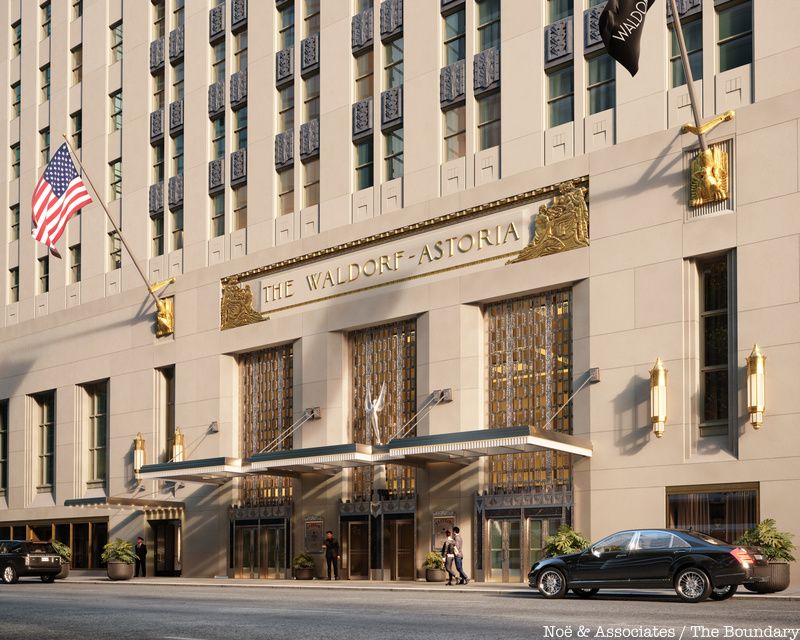
The famed Waldorf-Astoria Hotel has a quintessential New York City-origin story. It began as a family feud and rivalry between two very wealthy cousins who shared the last name Astor. William Waldorf Astor proceeded to irritate his cousin John Jacob Astor by building a 13-story hotel on the corner of Fifth Avenue and 33rd Street, on a residential block where John Jacob’s mother lived. Four years later, John Jacob, in turn, built a 17-story hotel just a few feet away–and the rest is history.
Today, the towers of the hotel have been converted into luxury residences, while the first eighteen floors, including iconic landmarked interior spaces, will operate as a hotel when renovations are complete. You can uncover more secrets of the Waldorf Astoria in our virtual talk with David Freeland, author of The American Hotel: The Waldorf Astoria and the Making of A Century, now in our Untapped New York Insider video archive.
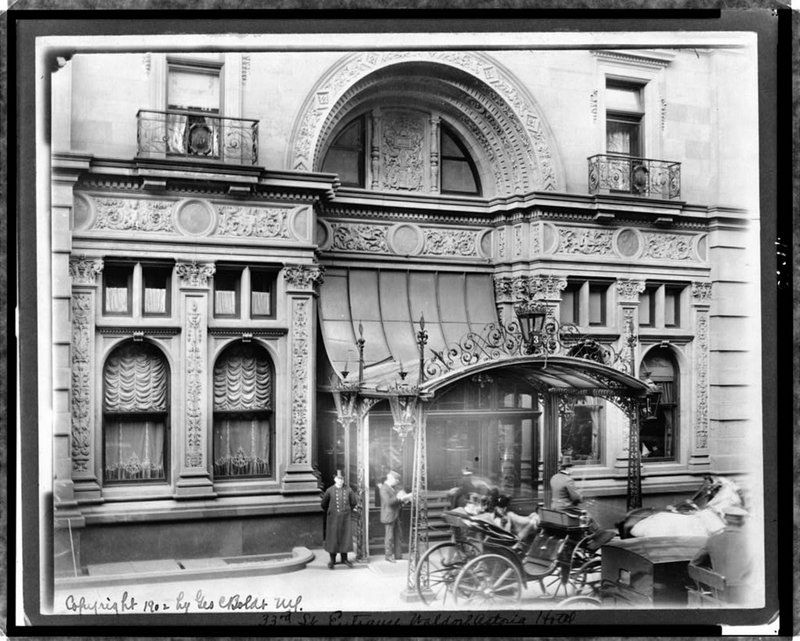
In 1893, William Waldorf Astor hired renowned architect Henry Hardenbergh, who would later design The Dakota apartments, to build a 13-story grand hotel on the site of what was his family mansion. At the time, it was the largest and most luxurious hotel in the world, with 450 rooms. He then hired the talented George C. Boldt to act as General Manager. Mr. Boldt, with his reputation for the highest levels of service, quickly brought to the Waldorf Hotel a reputation as a premiere hotel–the first to offer private bathrooms, room service and electricity throughout. They were also the first to offer a kids menu.
Meanwhile, John Jacob Astor IV owned the other end of the block. Four years after the construction of the Waldorf, John Jacob built a 17-story hotel within feet of the Waldorf, using the same architect. His intention was to name it The Schermerhon after his mother. He approached George Boldt with the idea of managing his hotel, since George worked just feet away for his cousin. But George had a problem with the hotel name and said that he would only agree to manage it if it had a more appealing and less difficult name. John Jacob came back with the name “The Astor,” named after his family’s fur-trading company in Astoria, Oregon. In time–and having good business sense–it was decided that the hotels should be physically joined together by a long hallway. The combined hotels, opening in 1897, became the largest hotel in the world.
In order to join the two hotels, a 300-foot corridor was created with a restaurant on either end. It was named Peacock Alley since the fashionistas of the time–both men and women–enjoyed strutting their stuff up and down the alley as the public looked on. The creation of Peacock Alley joined the two hotels, and the name was changed to The Waldorf=Astoria, using not a dash but an equal sign in between.
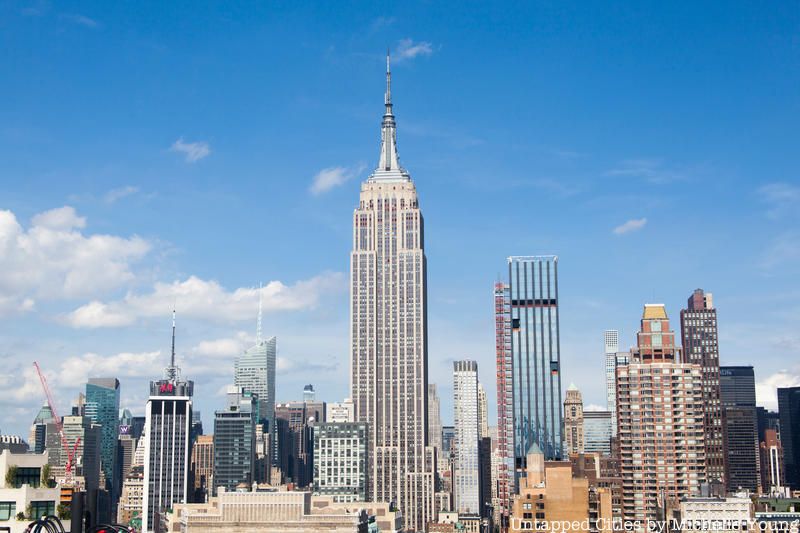
John Jacob Astor IV died in 1912 in the sinking of the Titanic. In 1919, William died of a heart attack. The land on which the grand hotel sat was sold to a developer in 1928. The hotel was demolished and in its place, the Empire State Building was erected.
Before the original Waldrof Astoria was demolished, a man by the name of Lucius Boomer, who owned and managed a number of hotels, purchased the Waldorf Astoria hotel name for $1 and then proceeded to build a new hotel on Park Avenue at its current location. Opening in 1931, the new hotel by the same name was 47-stories tall with 2,200 rooms and took up the entire city block from 49th Street to 50th Street and from Park Avenue to Lexington Avenue. It was the largest hotel in the world at the time.
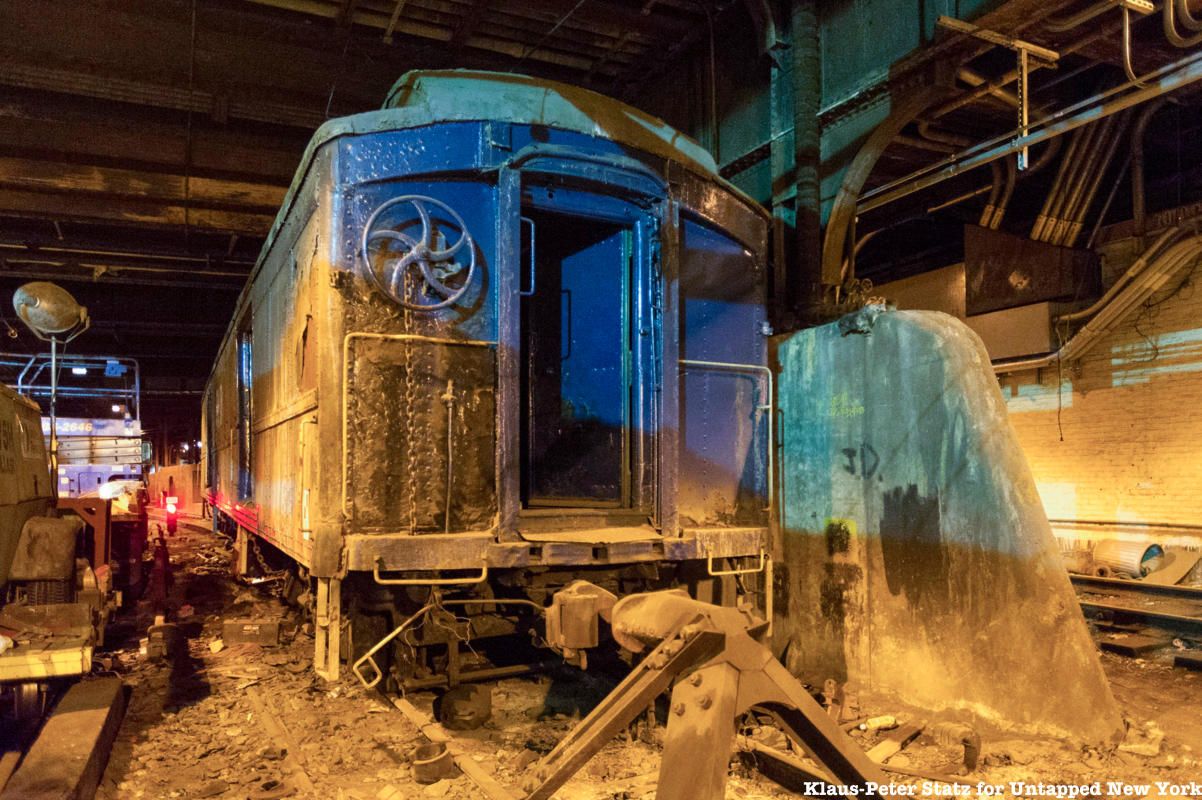
There is a private elevator leading to a secret train platform deep beneath the hotel. When the hotel purchased the Park Avenue land, there were tracks used to supply a nearby powerhouse. The powerhouse was no longer in use, but the Waldorf kept Track 61 to allow personal railroad cars for guests to pull in underneath the hotel and take the elevator directly to their rooms, by-passing the lobby.
Track 61 was reportedly used by celebrities like Andy Warhol and his famous underground party in 1965 to Franklin D. Roosevelt, who used it as a way to downplay his disability. The track still exists today. For decades, an abandoned rail car sat on the tracks but has since been relocated to the Danbury Railway Museum. You can spot the abandoned track through the grates looking down while walking by 49th Street at Park Avenue.
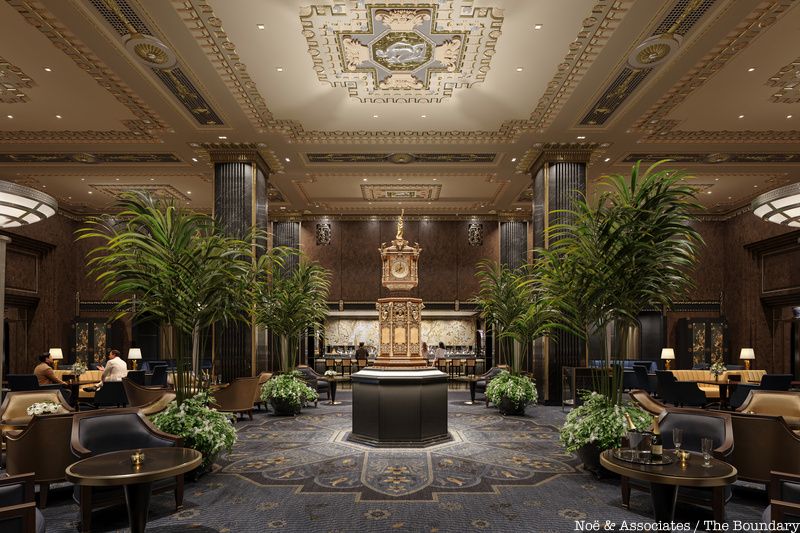
Publicity like this, you cannot buy. Elsa Maxwell was a theatrical figure, a newspaper gossip columnist and radio show host with a following of millions. She loved to play the piano with Cole Porter and play cards with Winston Churchill. But most of all, she loved to throw a really good party. She was such a popular figure in New York society, that when the new Waldorf Astoria Hotel opened in 1931, they gave her a suite rent-free, hoping she would attract business during the depression.
In 1935, Maxwell hosted the famous Circus Ball in the Grand Ballroom, arriving from the large service elevator atop an elephant. She never married, and died in New York in 1963.
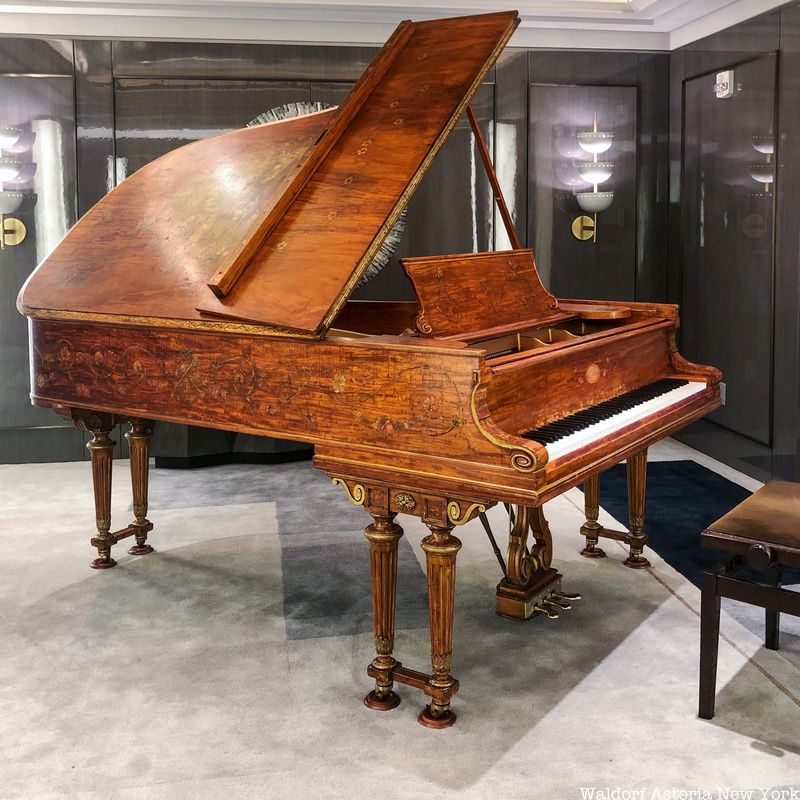
The largest suite in The Towers belonged to Cole Porter, who lived there from 1934 until his death in 1964. The 4,300 square foot Suite #33A consists of 5 bedrooms and 5 1/2 baths. Porter had two baby grand pianos inside along with his two cats named “Anything” and “Goes.”
Cole Porter’s piano, which was given as a gift to the artist by the hotel, was built in 1907. It was in Suite #33A and on this piano that he wrote most of his music. After Porter’s death in 1964, Frank Sinatra and his wife Barbara took over the lease and lived there until 1988. The piano was located in the Peacock Alley Lounge, just off the main lobby. The piano underwent restoration at the Steinway & Sons factory in Astoria and then spent some time at the New-York Historical Society, where guests enjoyed performances of Cole Porter classics by renowned pianists. It is currently back at the Waldorf Astoria New York in the residential gallery. When renovations are complete, it will return to the hotel’s central lobby.
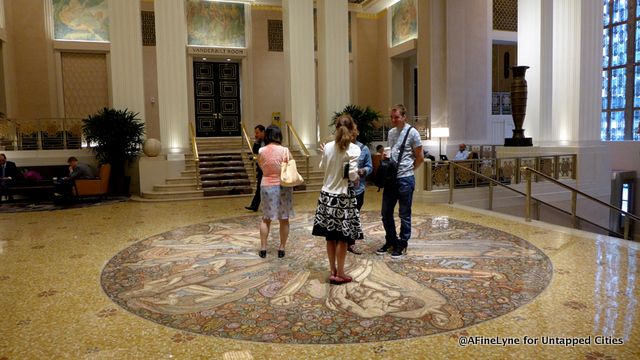
When the hotel was built, it was common practice for women and men to have separate lobbies, since it was not respectable for women to see financial transactions. The main lobby in the Waldorf Astoria was considered at that time to be the Gentlemen’s Lobby, the place where men sat and smoked their cigars, and the place where they paid the hotel bill. The ladies had their own lobby, which for decades had thick carpeting, heavy curtains covering the walls, and a drop ceiling.
But a flood in the Vanderbilt Room in 1983 required the removal of the carpets and drapes, revealing a magnificent tile floor. The 148,000 piece mosaic, named Wheel of Life, was created by French artist Louis Rigal. Intricate molding, a gold-leaf ceiling, and 13 oil murals also painted by Rigal were also uncovered. The Park Avenue lobby is one of the designated New York City interior landmarks inside the hotel. Teams at the renowned architecture firm Skidmore, Owings, and Merrill (SOM,) overseen by the Landmarks Preservation Commission, are restoring the space to the 1931 vision of original building architects Schultze & Weaver.
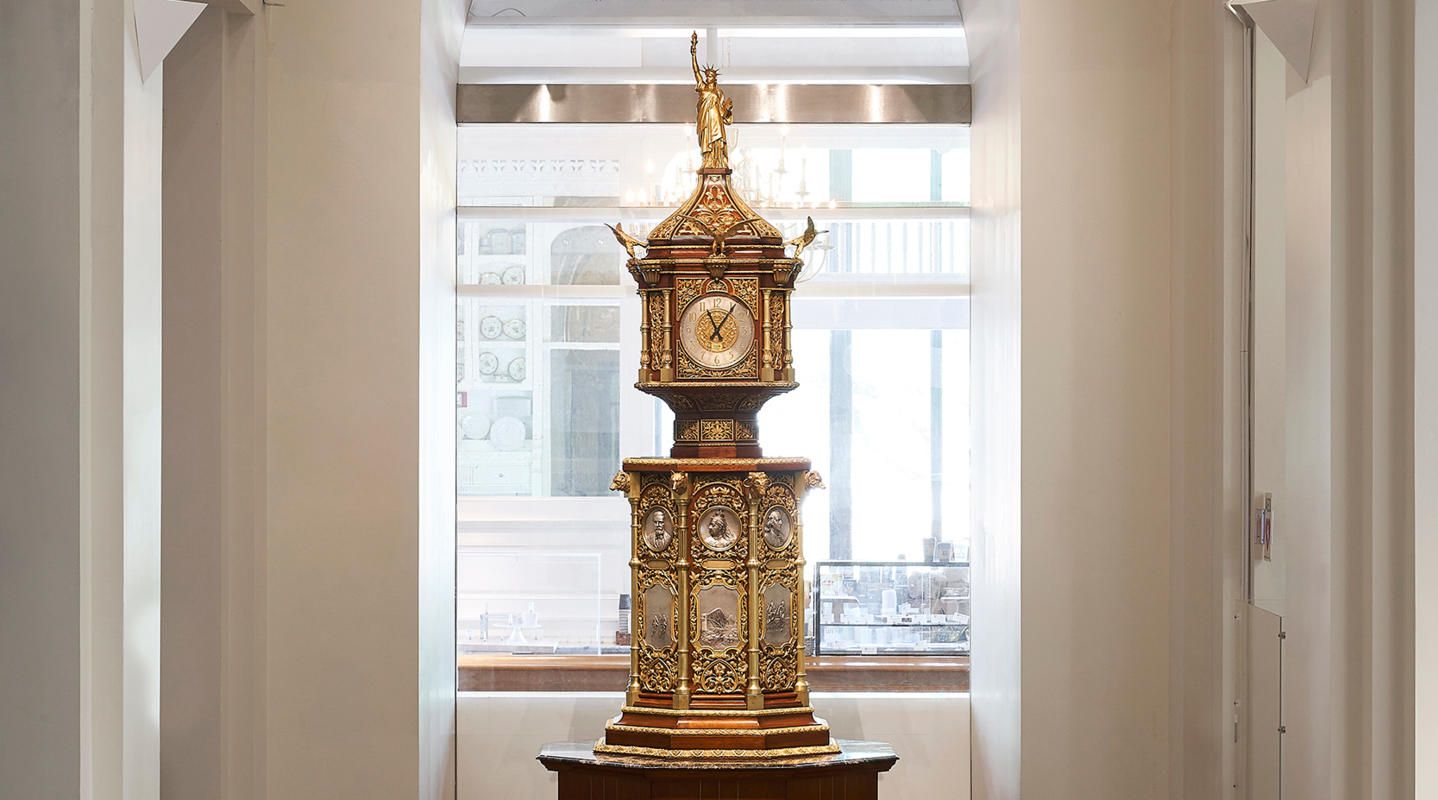
The grand clock that sits in the lobby of the Waldorf Astoria was originally exhibited at the Chicago World’s Fair in 1893. In 1902, John Jacob Astor afixed a small Statue of Liberty, a gift from France, to the top, creating intense friction with the British who originally commissioned the clock.
During the Waldorf Astoria’s renovations, the clock has received an extensive restoration. Until the hotel re-opens and the clock is returned to the lobby, you can see it on display at the New-York Historical Society. The Historical Society has multiple items from inside the Waldorf Astoria including John F. Kennedy’s Rocking Chair and the Cole Porter’s Steinway piano has been displayed there as well. Another iconic piece of the hotel that will return upon its openng is the Art Deco Spirit of Achievement statue sculpted by Iceland’s first female sculptor Nina Saemundsson.
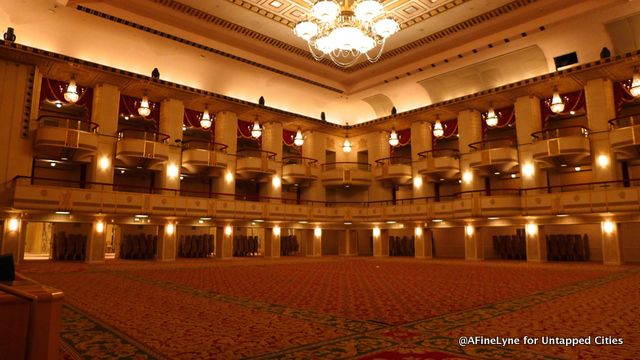
The General Motors Motor Show, which was then known as “Motorama,” was showcased in the Grand Ballroom of the Waldorf Astoria from 1931 to 1961. There were no car dealerships in the city back then, and this was a way to showcase fancy prototypes and concept vehicles to the public during the New York Auto Show. The Grand Ballroom is four-stories tall and not only housed auto shows, but could also seat 1,500 for dinner or 1,100 with dancing. The one and only Waterford crystal chandelier, out of 123 chandeliers, each patented and made of Austrian crystal, is located in the Grand Ballroom. It measures 16 feet in diameter. The Grand Ballroom a designated New York City interior landmark and is currently in the process of being restored to its 1931 Art Deco glamor by Skidmore, Owings, and Merrill (SOM).
In addition to the Grand Ballroom, there are many other event rooms at The Waldorf Astoria. Since they are frequently booked, we rarely get a chance to see them. We were delighted to get a look at the magnificent Basildon Room with its beautiful paneling, Parisian marble fireplace and frescoed ceiling.
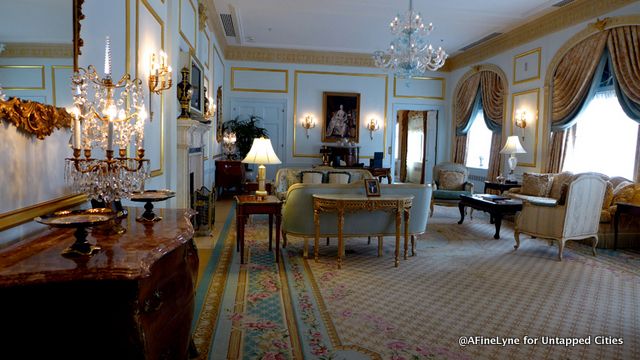
In keeping with the glamour and gossip that filled the halls of the Waldorf Astoria, King Edward VIII, who had given up his throne to marry a twice-divorced American, Mrs. Wallis Simpson, arrived at the Waldorf Astoria for their first visit to the U.S. in 1941. Now known as The Duke and Duchess of Windsor, their love for their many pugs and her love of the color powder-blue can be seen today in Suite 42R The Royal Suite.
A recent renovation by the hotel recaptured what made it their home, with the walls painted in her favorite color, and blue silk on the couches and chairs. The two-bedroom suite has a large living room with a baby grand piano adorned with framed photos of the Duke and Duchess. Attached is a formal dining room that can seat twenty and a small kitchen. On the chairs in their bedroom, pillows with images of pugs are similar to the pug pillows the Duchess collected. The Duke and Duchess had this suite well into the 1950s. This suite is now part of The Towers residences.
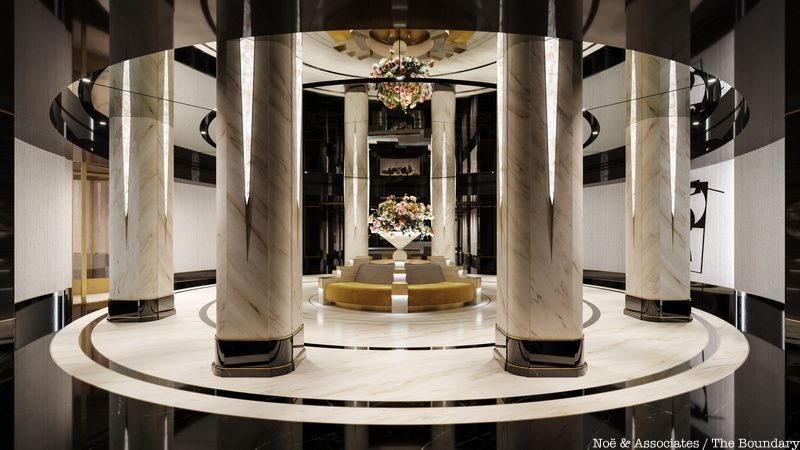
Lucius Boomer died in an airplane crash in 1947 and Conrad Hilton acquired management rights in 1949. The Hilton Hotels Corporation bought the Waldorf Astoria outright in 1972 but in February 2015 the hotel once again changed hands and was purchased by Anbang Insurance, a Chinese group for $1.95 billion dollars.
Anbang Insurance, now Dajia, is converting the top floors of the Waldorf Towers into residences, so you can now buy a home within the same walls as the famed Royal Suite, Presidential Suite, and Cole Porter and Frank Sinatra’s suite. The Towers have a private lobby and entrance located on 50th Street but can be also accessed from within the main hotel lobby. They have their own bank of elevators with interiors made of Carpathian elm and oak. Residents at The Towers can enjoy 50,000 square-feet of private amenity spaces including the Starlight Pool and outdoor Starlight Terrace that overlooks Park Avenue. You can see a sneak peek tour of these new spaces in our Untapped New York Insiders video archive! Gain access to the archive of 100+ past virtual experiences as well as new virtual and in-person events each starting at just $10 a month!
More than 300,000 bees in six active hives make honey on a rooftop deck twenty stories up. When beekeeping in our city became legal in 2010, the hotel enlisted a full-time beekeeper who set up the hives and extracts the honey used in the hotel restaurants. The hives have been removed while the hotel is under construction, but they will return when it reopens in 2023!
Next, discover the Top 10 Secrets of Grand Central Terminal. Get in touch with the author at AFineLyne.
Subscribe to our newsletter